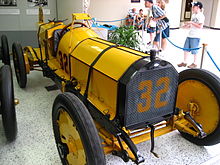
An open-wheel car is a car with the wheels outside the car's main body, and usually having only one seat. Open-wheel cars contrast with street cars, sports cars, stock cars, and touring cars, which have their wheels below the body or inside fenders. Open-wheel cars are built both for road racing and oval track racing. Open-wheel cars licensed for use on public roads, such as the Ariel Atom, are uncommon, as they are often impractical for everyday use.

The Indianapolis 500, formally known as the Indianapolis 500-Mile Race, and often called the Indy 500, is an annual automobile race held at Indianapolis Motor Speedway (IMS) in Speedway, Indiana, United States, an enclave suburb of Indianapolis. The event is traditionally held over Memorial Day weekend, usually the last weekend of May. It is contested as part of the IndyCar Series, the top level of American open-wheel car racing, a formula colloquially known as "Indy car racing". The track itself is nicknamed the "Brickyard", as the racing surface was paved in brick in the fall of 1909. One yard of brick remains exposed at the start/finish line. The event, billed as The Greatest Spectacle in Racing, is considered part of the Triple Crown of Motorsport along with the 24 Hours of Le Mans and the Monaco Grand Prix, with which it typically shares a date.

The Indianapolis Motor Speedway is a motor racing circuit located in Speedway, Indiana, an enclave suburb of Indianapolis, Indiana. It is the home of the Indianapolis 500 and the Brickyard 400 and formerly the home of the United States Grand Prix and Indianapolis motorcycle Grand Prix. It is located six miles (9.7 km) west of Downtown Indianapolis.

Ray Wade Harroun was an American racing driver and pioneering race car constructor. He is most famous for winning the inaugural Indianapolis 500 in 1911.

The 41st International 500-Mile Sweepstakes was held at the Indianapolis Motor Speedway on Thursday, May 30, 1957. The event was part of the 1957 USAC National Championship Trail and it was the third race of the eight-race 1957 World Championship of Drivers.

The 44th International 500-Mile Sweepstakes was held at the Indianapolis Motor Speedway in Speedway, Indiana on Monday, May 30, 1960. The event was race 2 of 12 of the 1960 USAC National Championship Trail and was also race 3 of 10 in the 1960 World Championship of Drivers. It would be the final time World Championship points would be awarded at the Indy 500.
This article discusses the year-by-year history of the Indianapolis 500 race.

The 1912 Indianapolis 500-Mile Race, or International 500-Mile Sweepstakes Race, the second such race in history, was held at the Indianapolis Motor Speedway on Thursday, May 30, 1912. Indiana-born driver Joe Dawson won the race, leading only the final two laps. Ralph DePalma dominated the race, leading 196 of the 200 laps, and pulling out to an over 5-lap lead. But with just over two laps to go, his car failed with a broken connecting rod.
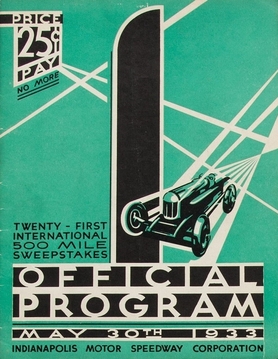
The 21st International 500-Mile Sweepstakes Race was held at the Indianapolis Motor Speedway on Tuesday, May 30, 1933. Louis Meyer defeated Wilbur Shaw by a time of 401.89 seconds. The average speed of the race was 104.162 miles per hour (167.632 km/h) while Bill Cummings achieved the pole position with a speed of 118.521 miles per hour (190.741 km/h). The race was part of the 1933 AAA Championship Car season.
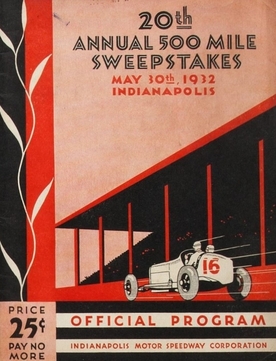
The 20th International 500-Mile Sweepstakes Race was held at the Indianapolis Motor Speedway on Monday, May 30, 1932. Attrition was the story of the race, with 26 of the 40 cars dropping out due to crashes or mechanical failure. A record eight different drivers led laps during the race, with no driver seemingly able to hold the lead without experiencing some sort of trouble. For the third year in a row, Billy Arnold looked as if he would be the dominant car, but he sailed over the turn three wall on lap 59. Rookie Bob Carey also hit the wall while leading. Fred Frame took the lead for good on lap 152, and won from the 27th starting position - the furthest back of any winner except for Ray Harroun in 1911 and later, Louis Meyer in 1936. Frame was accompanied by riding mechanic Jerry Houck.

The 4th International 500-Mile Sweepstakes Race was held at the Indianapolis Motor Speedway on Saturday, May 30, 1914.
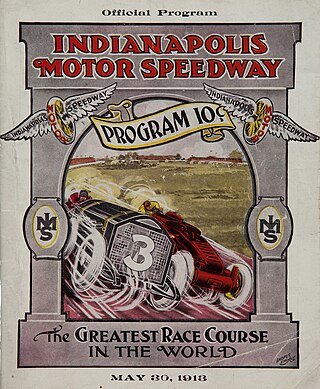
The Third International 500-Mile Sweepstakes Race was held at the Indianapolis Motor Speedway on Friday, May 30, 1913. Frenchman Jules Goux became the first foreign-born, and first European winner of the Indianapolis 500. His margin of victory of 13 minutes, 8 seconds over second place Spencer Wishart still stands, as of 2023, as the largest margin of victory in Indianapolis 500 history.
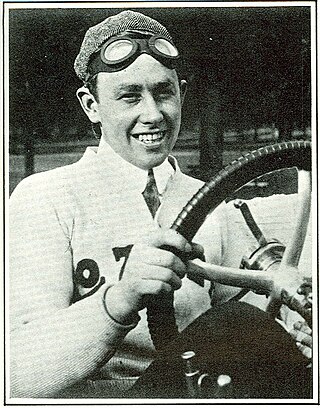
Ralph Kirkman Mulford was an American racing driver who participated in the 1911 Indianapolis 500. In 1911 he won the Vanderbilt Cup in Savannah, Georgia.
The 1911 Grand Prix season consisted of Grand Prix races in the United States and Europe. It was a significant year as European racing gradually came out of the doldrums. A Grand Prix was held in France again. The first Indianapolis 500 was held at Indianapolis Motor Speedway, joining the American Grand Prize as a leading race.

Race results from the automobile and motorcycle races contested at the Indianapolis Motor Speedway in Speedway, Indiana. Races have been held on seven different track configurations:
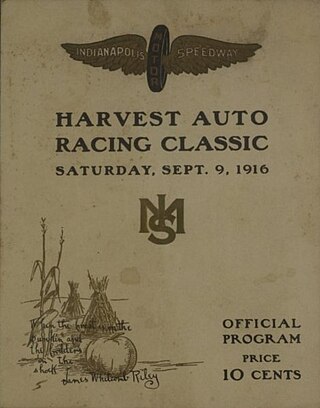
The Harvest Auto Racing Classic was a series of three automobile races held at the Indianapolis Motor Speedway on Saturday September 9, 1916. The meet, held four months after the 1916 Indianapolis 500, featured a 20-mile race, a 50-mile race, and a 100-mile race. The main event, a 100-mile Championship Car race, paid points towards the 1916 AAA National Championship. Johnny Aitken won all three races, two of which had a margin of victory of less than a car length.

The 95th Indianapolis 500 was held at the Indianapolis Motor Speedway in Speedway, Indiana on Sunday May 29, 2011. The race was part of the 2011 IZOD IndyCar Series season. The track opened for practice on May 14 and time trials were held from May 21 to 22. Alex Tagliani won the pole position, and the race was won by Dan Wheldon. It was his second Indy 500 win after the 2005 race, and the last win of his racing career. It was the first of two Indy victories for car owner Bryan Herta.

A riding mechanic was a mechanic that rode along with a race car during races, and who was tasked with maintaining, monitoring, and repairing the car during the race. The various duties included manually pumping oil and fuel, checking tire wear, observing gauges, and even massaging the driver's hands. They also communicated with the pits and spotted from inside the car. If the car ran out of fuel, or otherwise broke down, the riding mechanic was usually responsible for running back to the pits to fetch fuel or the necessary spare parts.
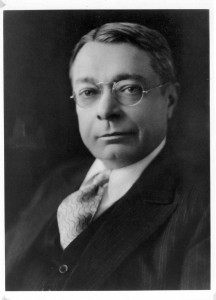
Howard Carpenter Marmon was an American engineer and the founder of the Marmon Motor Car Company. He was a pioneer in automobile engineering credited with several innovations including the use of weight-saving aluminium components in car manufacture, and development of the 16 cylinder V16 engine. He is most known for his creation of the six cylinder Marmon "Wasp", a car driven to victory by the company designer, Ray Harroun in the inaugural Indianapolis 500 race in 1911.

Cyrus Richard Patschke was an American racing driver. He is best known for driving relief for Ray Harroun, during the latter's victory in the inaugural Indianapolis 500.

